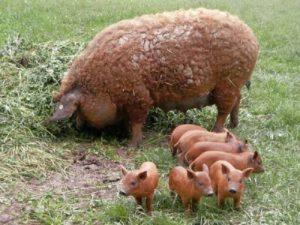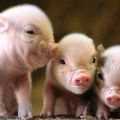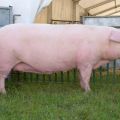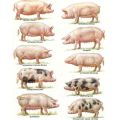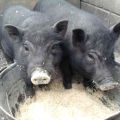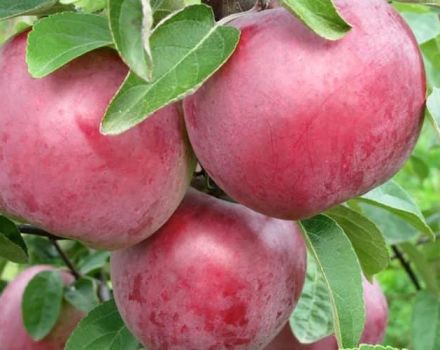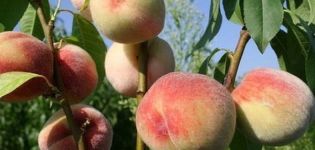Systems and methods of keeping pigs at home for beginners
The maintenance of piglets and pigs requires a lot of labor, financial resources and arrangement of a pigsty. The animals are fed for 10 months. They are fed 2-3 times a day, and feed rich in vitamins, amino acids, protein, carbohydrates. At a time, the pig eats 1-2 kilograms of feed, that is, about 60 kilograms of potatoes, grains and vegetables per month, and recovers only 10-15 kilograms monthly.
Pig breeding technologies
Animals such as pigs are raised not only on an industrial scale, but also at home, or rather, in personal subsidiary plots. There are several globally recognized technologies that can achieve good results and minimize mortality. The choice of rearing method depends on the size of the herd and material resources.
For novice pig breeders, any technology is a whole science, which has its own principles and rules. Before you start breeding pigs, you need to understand this issue theoretically, and then move on to practice.
Danish
It is known that Denmark is the leader in Europe in the production of pork, the experience of this country should be adopted. There, in breeding farms for fattening they buy only purebred pigs that are rapidly gaining weight. The Danish breeding method is characterized by the construction of stationary pigsties with the latest technology. This technology is used on an industrial scale, but private entrepreneurs can take advantage of this technique.
Distinctive features of Danish technology:
- emphasis on cleanliness and fresh food;
- feeding on schedule;
- special machines for childbirth and feeding of newborns;
- floors with cracks;
- automatic manure removal system;
- keeping growing pigs in a spacious pen for 30 pieces;
- electronic heating and ventilation system;
- automatic feed line;
- special regime of veterinary control.
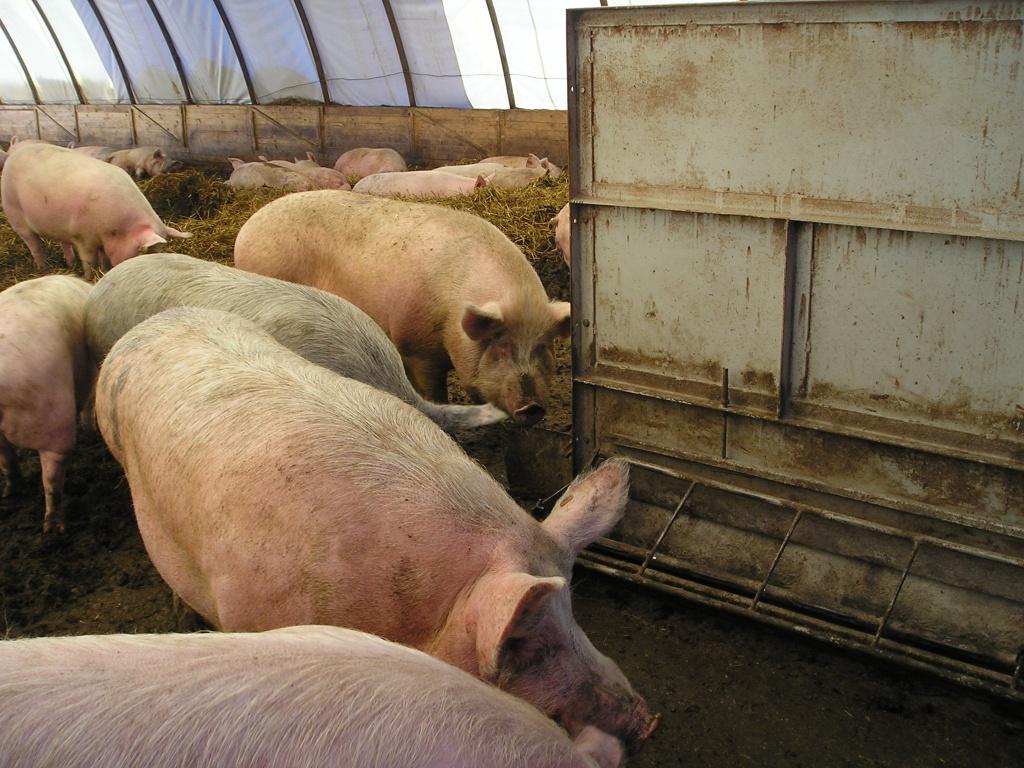
With this breeding method, the farm is a closed area, which is not allowed to strangers, including stray animals (cats, dogs). Vaccination is carried out according to the schedule. Pigs are kept clean and comfortable with regular hygiene measures.
Canadian
This is the opposite technology to Danish. Stationary pigsties are not built in this case. Pigs are kept in temporary tent hangars.Traditional straw is used as bedding.
Distinctive features of Canadian technology:
- construction of awning hangars;
- non-replaceable bedding made of straw or sawdust;
- keeping up to 250 animals in one room;
- heated drinker equipment;
- bunker feeders with free access at any time of the day.
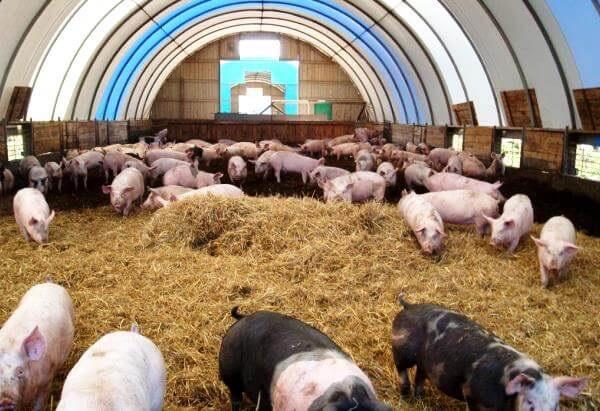
With this technique, pigs are kept practically in cold conditions. In winter, the animals are warmed by the compost bedding, which is not changed, and a new layer is added every week. The temperature of such a floor reaches 15 degrees Celsius. Animals can move freely around the hangar.
Biphasic
Usually young piglets are kept with the sow until a certain age, and then transferred to another room. This procedure is very stressful for the animals. In modern farms, piglets are not transferred anywhere. They live with the sow for up to 3-4 months. Then the females are quietly taken to another room, and the piglets are left in the same. This is the essence of the two-phase pig rearing system.
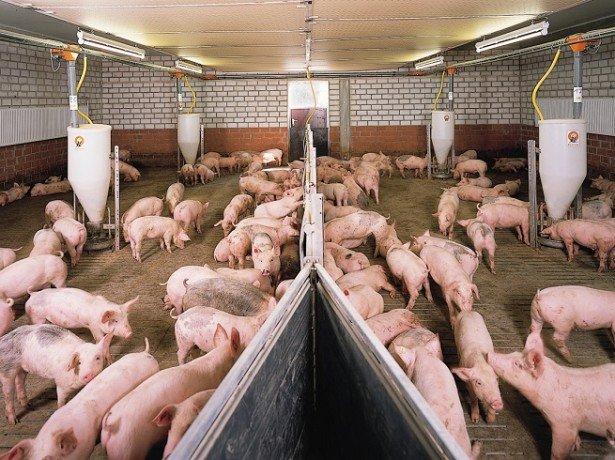
Pigsty requirements
Stationary pigsties are built to breed pigs. These premises must meet certain criteria. Correctly raising pigs means creating comfortable conditions for the animals to develop and grow.
Temperature and humidity
In the pigsty, the air temperature should be at least 18 and not higher than 20 degrees Celsius. True, newborn piglets need to create special conditions. During this period, animals are sensitive to cold and draft. Normal air temperature for newborns is 28-33 degrees Celsius. Heating of the room in cold weather is carried out using lamps and electric heaters. A decrease in temperature below 14 degrees Celsius, as well as an increase above 30 degrees Celsius, increases feed consumption, but reduces weight gain.
The air humidity in the pigsty should be 60-70 percent. High outdoor temperatures and dry indoor air can cause overheating. There should not be a steam room in the pigsty. High temperature and humidity can lead to poor health, refusal to feed. The air condition in the room is regulated by means of supply and exhaust ventilation or simple ventilation.

Water availability
Drinking bowls must be installed in the pigsty. They are made of waterproof material. Drinking bowls are group or designed for one animal. On an industrial scale, automatic water supply is used. In subsidiary farms, pigs are watered from troughs. Water is poured 3 times a day, fresh each time. Animals are watered in between feed distributions. The water should be warm and clean. Norm for one animal: 1 bucket (8-10 l).
Place for walking
The room for one pig should be at least 4-5 square meters. In a non-walking compartment (cage, container), the animal will recover faster. If the pigsty contains several heads, the pigs are equipped with a walking area. Usually, for 50 animals, the walking space should be 250 square meters.
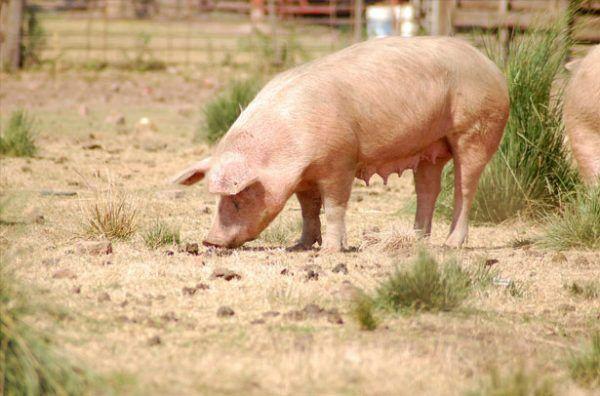
Lighting
Daylight hours in the pigsty should be 10-12 hours. Animals react well to daylight, therefore, windows are installed in the premises, which are placed near the ceiling. In winter, when it gets dark early, you can turn on the light bulbs. True, artificial lighting should not be too bright, otherwise the pigs will behave aggressively.
Automatic manure removal systems
An automatic manure removal system is installed under the slatted floor for pigs. There is nothing difficult in installing it. First, concrete baths are made. A slatted floor is installed on top. The faeces enter the concrete tank through the holes. From there, the sewage is pumped through pipes and with the help of pumps into containers and removed from the farm. The feces tank is cleaned every week.
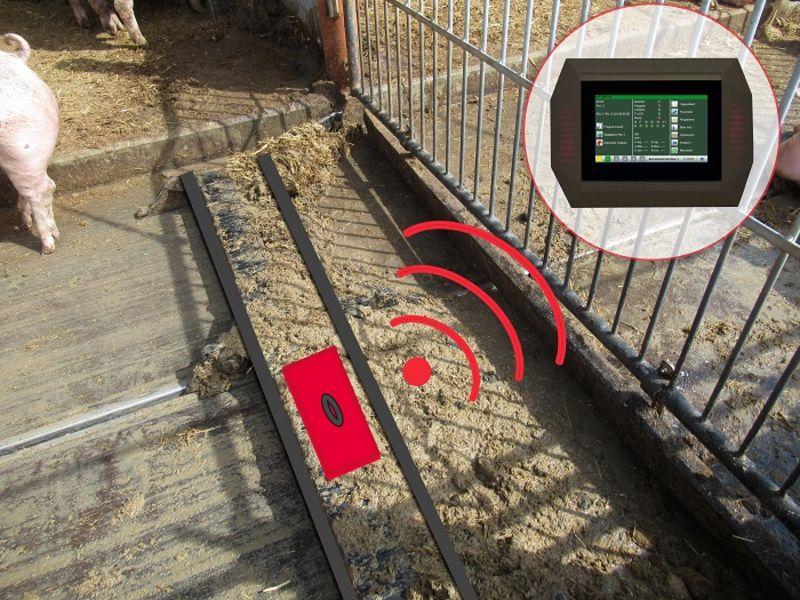
How to care
In order to raise a healthy animal, it must be properly cared for from the moment of birth. At the age of 1 and 2 months, piglets are vaccinated against the most dangerous diseases. Fleas and helminths are taken out once a quarter.
The pigs are fed on a schedule 2 or 3 times a day. Piglets should gain weight every month. The weight of a newborn is about 1 kilogram. By the end of the first month of life, the piglet should weigh 10 times more. Every month the animal's weight should increase by 10 kilograms. It is recommended to slaughter pigs at the age of 10 months, when they gain 130-140 kilograms.
Animals must be kept clean. The pigsty is cleaned daily, the manure is raked into a sump. If the floor is not slit, it is covered with straw. It is recommended to ventilate the room once a day, disinfect - once a month.

Types and schemes of feeding
Pigs are raised for meat, lard or bacon. Depending on the desired result, they adhere to a certain feeding scheme.
Meat feed
In order to raise an animal for meat, it is fed mainly with boiled potatoes and porridge made from crushed barley. The diet is supplemented with various fresh vegetables (pumpkin, beets). Pigs are given green feed, cereals (wheat, corn), compound feed, cake, meal. Any breed is suitable for growing for meat.
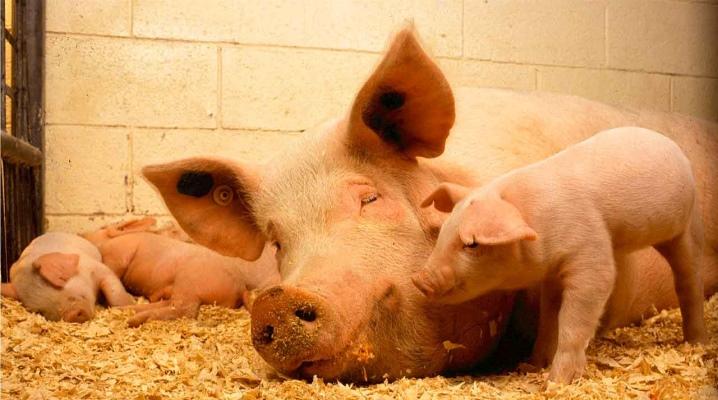
Fattening for bacon
In order to obtain lard with numerous meat streaks, pigs are fed in 2 stages, starting at 2.5 months of age. The weight of the young should be 25-30 kilograms. Up to 5 months, animals are given protein-rich food (crushed grain of wheat, corn, meal, cake, mixed feed), as well as vegetables (pumpkin, beets) and green feed. From 5 to 7 months, pigs are fed better quality. The animals are fed with potatoes, crushed barley and peas, and herbs of leguminous plants. Only early maturing breeds are suitable for fattening for bacon: Estonian bacon, large white, Landrace. You need to keep pigs no more than 7-8 months.
Fattening
Exclusively to obtain fat, animals are fed with food rich in carbohydrates. Pigs recover quickly when given boiled potatoes, cereals, small amounts of fresh vegetables and green herbs.
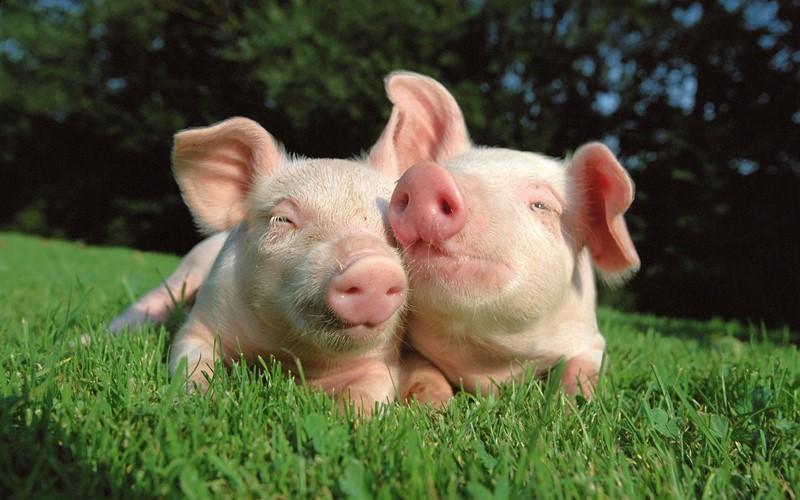
How to feed piglets without a sow
Newborn piglets are usually separated from the sow at 2 months of age. If the pig refuses to feed the young, they are fed with cow's milk sweetened with sugar. Piglets should be kept in a separate room, where the air temperature is not lower than 30 degrees Celsius.
Starting from 3 weeks of life, babies can add semolina to milk, a little later the animals are transferred to boiled potatoes. It is necessary to organize the care of the piglets, remove the manure daily, and lay fresh straw.
Possible diseases and methods of dealing with them
Pigs must be vaccinated against dangerous diseases. The piglets receive their first injection on the 5th day after birth. The baby is injected with an iron-containing drug. At 15 days of age, they are vaccinated against rickets.
At 16-30 days - vaccination against Aujeszky, at 20 days - vaccination against salmonellosis, at 20-30 days - against pasteurellosis, at 40 days - against plague, at 45 days - against leptospirosis, at 60 days - against erysipelas and Teschen's disease , at 90 days - from foot and mouth disease. Worms and fleas are taken out to piglets once a quarter.
Features of winter content
During construction, they try to insulate the pigsty in order to turn on heaters less often in winter. The room temperature should not fall below 18 degrees Celsius.The pigsty is heated with heaters, fan heaters and infrared lamps. Pigs are fed, as usual, 2-3 times a day. Electric lighting is turned on in the evening.

